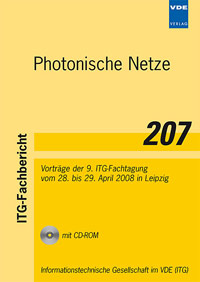WDM-PON – A Platform for consolidated Metro Access and Backhaul
Konferenz: Photonische Netze - 9. ITG-Fachtagung
28.04.2008 - 29.04.2008 in Leipzig, Germany
Tagungsband: Photonische Netze
Seiten: 5Sprache: EnglischTyp: PDF
Persönliche VDE-Mitglieder erhalten auf diesen Artikel 10% Rabatt
Autoren:
Grobe, Klaus; Elbers, Jörg-Peter (ADVA AG Optical Networking, Fraunhoferstr. 9a, 82152 Martinsried, Germany)
Inhalt:
Today, there is a major trend in metro access networks towards FTTx (Fiber-To-The-x, where x stands for Home (H), Building (B), Curb, or Cabinet). Many agree that FTTH/FTTB will win mid- to long-term over other deployment scenarios because of a higher available bandwidth. Future metro networks need to maximize cost efficiency. This leads to requirements of reducing general OpEx (Operational Expenditures) and the numbers of active (concentrator) sites in the network in particular. This requires the consolidation of the three main metro area applications onto one common metro access & backhauling platform. These applications are (wireless, wireline) backhaul, business/enterprise access, and high bandwidth residential access. Whilst these applications today use different technologies (e.g., active point-to-point Ethernet, CWDM rings, VDSL and/or GPON) for the first mile, they need a converged infrastructure for efficient backhaul. In some networks, GPON is already being deployed for nonresidential services. However, it can be shown that GPON, even with 10G bit rate and wavelength extension according to ITU-T G.984.5, will run out of capacity in various networks. This is driven by the developments of backhaul capacity towards multiples of GbE per DSLAM, enterprise access bit rates towards 10GbE, and residential access bit rates towards symmetrical 100Mb/s, respectively. We show that an infrastructure based on passive WDM technology can solve the metro network consolidation requirement and make the network future-proof. WDM-PONs can provide significantly better scalability than GPON (and EPON). They can scale in per-wavelength bandwidth from 1G via 2G5 and 4G3 to 10G (and more, should this be necessary). They have advantages regarding security (because wavelengths provide point-to-point connections), and also regarding simple active-layer access. Also, they can be combined with GPON/EPON-like TDMA schemes in later steps.


